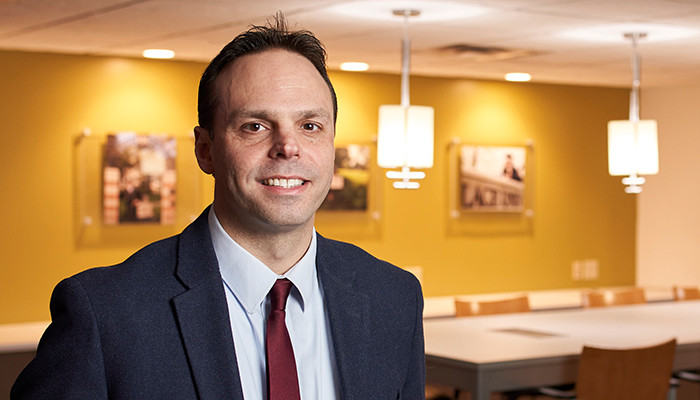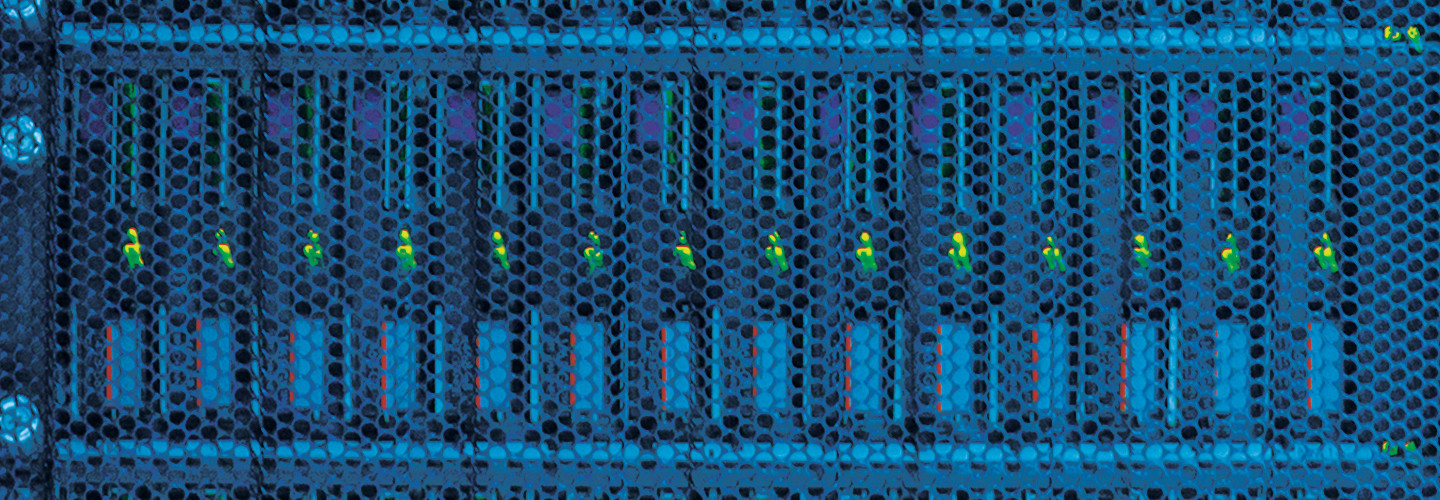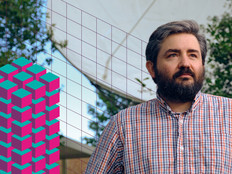"If we were to have a failure, we could easily fail over and get the environment back up and running in under a minute," says Baldwin Wallace CIO Greg Flanik.
Why On-Premises Storage Still Matters in Higher Education
As more students bring their own devices to school, Baldwin Wallace University, a small comprehensive university in Ohio, has shrunk the number of computer labs on campus.
“We closed down two 24/7 laboratories, we repurposed two others to flexible modular classroom space, and another was converted to collaboration space,” says Greg Flanik, Baldwin Wallace CIO. “In all so far, there’s been a 20 percent reduction in computer labs with a few more planned.”
MORE FROM EDTECH: Superconvergence is the next iteration of data center technology.
The shift to reduce the university’s computer lab footprint is part of a larger organizational goal to reimagine how the university uses its space.
“It’s really about breaking the mindset of ‘this is my IT space’ to ‘this is the university’s space; how can we make a more engaging student experience,’” says Flanik.

However, the computer labs that do remain need to be up for the tasks at hand, particularly as specialty labs shift to virtualized terminals rather than fixed desktops, says Flanik. Baldwin Wallace’s IT team is responsible for supporting these virtual desktops in its mix of more than 1,000 endpoints across campus.
Because it facilitates both student learning and faculty research, virtual desktop infrastructure is mission critical for Baldwin Wallace. But with VDI comes significant latency and uptime concerns, both of which are affected by storage space and heft.
Flash Storage to the Rescue
Storage solutions are often the unsung heroes of IT infrastructure. Unlike campus Wi-Fi, this back-end component attracts little attention beyond the IT department, and emphasis on the cloud has pushed on-premises solutions out of the limelight. But on-premises storage is central to many important modern campus initiatives, including virtualization, public safety, student experience and distance learning, among others.
Natalya Yezhkova, research vice president for IDC’s enterprise infrastructure practice, says that many organizations have moved their “volume” data storage to the public cloud while keeping their “value workloads” — those that are most mission critical — in-house. “A lot of this is still trial and error for users,” Yezhkova notes. “There are pros and cons to both. Public cloud is definitely taking a big chunk, and it will continue to do so. But on-premises storage is not going away.”
To support VDI, Baldwin Wallace relies on the NetApp AFF 220 all-flash array at its primary data center, which it purchased in the summer of 2019, along with NetApp FAS 2720 at a disaster recovery site. The on-premises, all-flash solution provides the rapid response necessary for data-intensive applications, and the dual-site setup gives the school the redundancy required to ensure reliability.
“We’re snapshotting data every hour, back and forth between the two locations,” notes Flanik. “If we were to have a failure, we could easily fail over and get the environment back up and running in under a minute.”
The Right Storage Infrastructure Powers Better Performance
For Flanik, the decision about where to place storage infrastructure wasn’t based simply on money, nor was it part of a cloud-first or other strategy that declared a broad mandate to place workloads in one environment or another. Rather, his focus was on supporting the best possible performance for faculty, students and staff and getting ahead of problems before they became roadblocks.
“The last thing you want to do is make an instructor look bad in front of students,” Flanik notes. “You want the computer and the virtual desktop environment to work essentially like a light switch. We just take for granted that the light will go on or off, and we really want the computing environment here to work the same way.”
This move to be proactive — anticipating problems and identifying other areas of university operations that might be impacted — is key to ensuring IT is seen as a strategic partner, not just a team of firefighters.
“We could see in the numbers that we were approaching the acceptable threshold,” says Flanik. “At the same time that we’re fighting storage problems, we’re also dealing with the demand for connectivity and Wi-Fi. We’re dealing with a network that was originally optimized for wired and undoing those changes to optimize it for wireless.”
MORE FROM EDTECH: Data Backup and Recovery Require Speed and Service
Performance concerns also drove the decision-making at Mississippi College when the school adopted the FlashArray//m10 from Pure Storage to support VDI and enterprise applications. The school noticed latency issues with their previous storage area network and received complaints from end users. That previous solution largely performed well until it hit 80 percent disk capacity, at which point “performance just dropped off a cliff,” says Bill Cranford, Mississippi College CIO.
“In our business, no one ever applauds you for doing a good job,” Cranford notes. “But our help desk immediately began noticing a decrease in calls. There are key times during the school year when our usage is up quite a bit — pre-registration, orientation — and we immediately stopped seeing any problems during those peak times.”
Bill McCreary CIO and CTO, University of Toledo
Striking a Balance with Flash Storage
More higher ed data center administrators must learn to balance their technical prowess alongside being “masters of the balance sheet,” says Bill McCreary, CIO and CTO at the University of Toledo. “We’re heading toward a hybrid world, and we’re trying to figure out the right balance.”
While the University of Toledo does rely on private and public cloud storage infrastructure to support a number of systems, the school has also made extensive investments in on-premises storage infrastructure, which includes the Dell VxRail hyperconverged server platform, as well as the Dell EMC Integrated Data Protection Appliance.
McCreary notes that the University of Toledo currently runs around 700 virtual machines on-premises, with another 400 on-premises physical servers. That mix is constantly changing, requiring the school to continuously tinker with its storage infrastructure to provide the right level of support. “We expect our on-premises environment to be about half of its current size within five years,” McCreary says. “It’ll never get quite to zero.”
Flanik notes that finding the right storage solution isn’t necessarily a matter of what’s best, but rather finding the right tool for the job. For Baldwin Wallace, its all-flash array turned out to be an ideal fit.
“The flash storage is much quicker, much more resilient, less prone to failure,” Flanik notes. “The latency has decreased significantly. It does cost more, but we’re only running the applications on that storage that demand that kind of technology. If you’re archiving old files, you’ll go to the less expensive spinning disk. But if you’re doing research in a laboratory, having access to that high-speed capability makes a big difference.”










